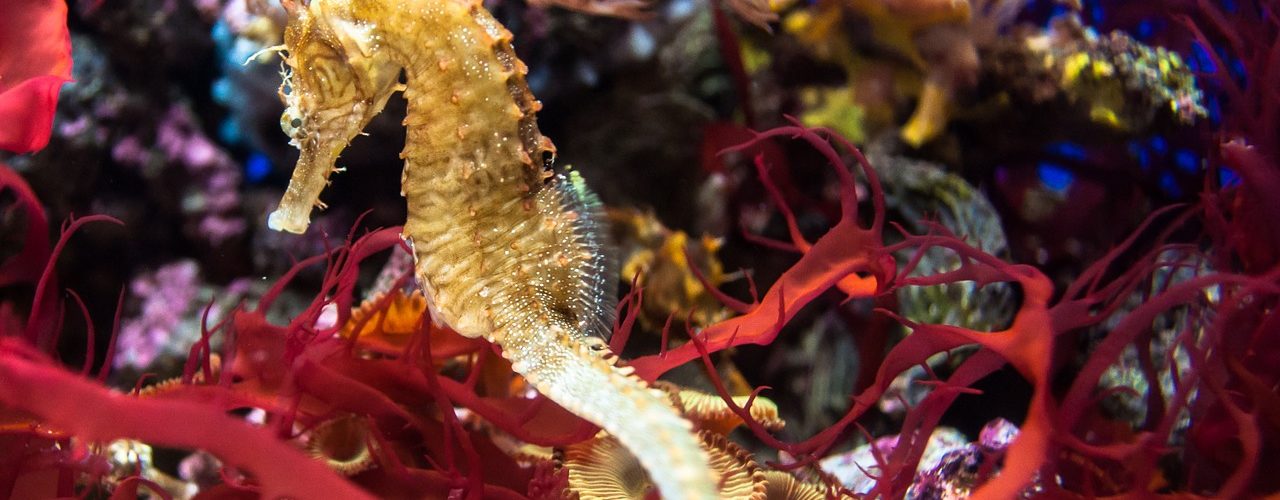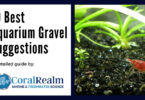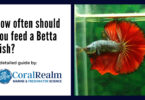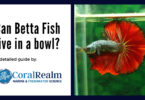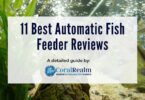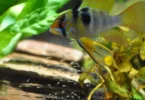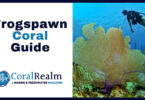Last Updated on November 19, 2022 by Matt
RODI water stands for Reverse Osmosis De-Ionized water. It is also commonly written as RO/DI water, or if one of the stages is left out, simply RO water or DI water.
RODI water is a water purification and filtration system that rids tap water of all of its harmful chemicals and compounds, leaving behind pure water perfect for use in aquariums.
Aquarium water conditioner products are hugely popular and well known because they remove chlorine, chloramine, and heavy metals from tap water. The compounds are still there, but the water conditioner binds them and makes them non-toxic, and enables the aquarium filter to be able to remove them from the water column. While this is perfectly fine for beginner aquarists, more advanced hobbyists tend to lean towards using RODI water for water changes. They are ideal for a saltwater tank setup.
In this article we will explain exactly what RODI water systems do, how they work, why you would want one and why it is much better than tap water, and give some examples and review some of the best RODI water systems on the market.
IN THIS ARTICLE
What Do RODI Water Systems Do?
RODI systems are essentially water filters that take tap water and produce pure clean water without any of the contaminants that are found in tap water. You are left with pure water, the same as distilled water.
They generate very pure water which have virtually no total dissolved solids (TDS), chlorine, fluoride, salts, sediments, parasites, or heavy metals. The remaining compounds are very very low in concentration. Many people use RODI water filtration units attached to the mains water and faucet. This water is very pure and clean, pretty much pure H20, and so is absolutely safe enough to drink.
While water conditioners are brilliant products, and make everyday tap water safe for aquarium use, they aren’t ideal. They may not remove all the contaminants, and the compounds “made safe” are still present and need to be removed by the filter. Some species are very sensitive to their environment, certain shrimp, corals, and filter feeders are prime examples, and treated tap water stresses them greatly.
This is where RO/DI water comes into play. Pure water won’t have any negative impacts to any aquarium species.
How Do RODI Water Systems Work?
You might be wondering exactly how an RODI system works. We have said that RODI stands for Reverse Osmosis De-Ionization. You can find water systems which have either only reverse osmosis, RO water systems, or only deionization, DI water systems.
However by far the most common are the two filtration systems together. The two water filtration systems together produce perfectly purified water. First, the water moves through a pre-filter to remove any tiny floating debris from the water which would otherwise clog the water purifying system.
Once the water has been pretreated to be rid of debris, it will then flow through the RODI system.
Reverse Osmosis (RO)
Osmosis is a very common natural process, where water molecules move from a solution of low salinity to high salinity across a semi-permeable membrane.
As you can imagine, reverse osmosis is essentially the opposite of this process. Water molecules instead move from a solution of high salinity to low salinity. Pressure is applied to a solution of saline water across a semi-permeable membrane, and water molecules are forced through the membrane, leaving other compounds and contaminants behind.
De-Ionization (DI)
Deionization is a process whereby ionized compounds are removed from the water solution. Both positively charged anions and negatively charged cations are removed from the solution. These compounds include salts.
Both natural and synthetic resins are often used in the deionization process.
These resins work by exchanging their own H+ and OH– ions with the positively and negatively charged molecules in the water. H+ and OH– ions together form pure water, H2O, so this process draws charged contaminants from the water and replaces them with water molecules.
Why Should You Use RO/DI Water?
Even if you properly treat tap water to detoxify chlorine, chloramine, and heavy metal contaminants, tap water simply isn’t as good as RODI water for aquariums. The contaminants that are detoxified are still going to have to be removed by the filtration system, and this does put extra stress on the filter.
Control harmful compounds
Tap water will also contain phosphate and nitrate. These compounds will be present in higher concentrations in some tap water sources than others, but will be present at some level. These compounds are important plant fertilizers, and this includes algae. Putting these compounds into your tank via water changes increases the chance of algal growth and algal blooms.
Phosphate is very damaging in reef tanks, where it inhibits the uptake of calcium carbonate by corals. This is especially damaging for reef-building hard corals, both SPS and LPS, such as Acan corals. RODI water systems take out these compounds and so you can control exactly what goes into the water column.
While treating tap water with water conditioners detoxifies chlorine, chloramine, and heavy metals, these compounds are still going into the water column to be collected by the filter. Very sensitive invertebrates such as corals, mollusks, and sea anemones which are filter feeders can still be affected by these contaminants. RODI water systems remove all contaminants so you are only putting pure H20 into your tank environment.
Control water hardness
RODI systems also remove all magnesium, calcium, carbonate, and bicarbonate ions from tap water. Magnesium and calcium are the ions responsible for the general hardness (GH) of water, while carbonate and bicarbonate ions make up the carbonate hardness (KH).
If water has low GH it is known as soft water, while high GH is hard water. GH and KH are linked and often go hand in hand, but you can have high GH and low KH and visa versa. It can be quite tough to reduce GH and KH, especially if tap water is very hard. With RODI water all ions are removed, so both the GH and KH are at 0. You can then raise the hardness levels to what your tank requires. This is especially useful in tanks such as African Cichlids and reef tanks which require specific hardness ranges.
Control salinity
RODI water systems remove all the salts contained in tap water to leave you with pure water to play with. This allows you to add the correct amount of salt, and the correct salt, to the water to top up your tank. Being able to start from 0 salinity allows you to ensure that you only add water with exactly the same salinity as your tank, which means your tank inhabitant won’t be stressed by frequent changes in salinity.
RODI Water System Reviews
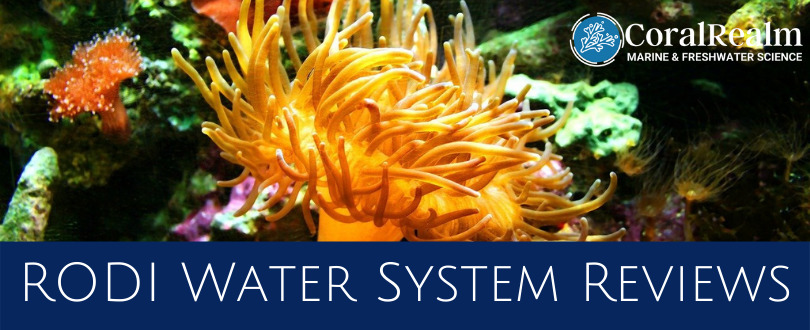
In the following section we will review three of the best RODI water systems on the market today.
SpectraPure MaxCap Performance RO/DI Water System
- 90 gallon per day, 99% rejection thin-film composite Reverse Osmosis Membrane
- 2:1 waste ratio produces 50% less waste water
- Manual flush valve for longer membrane life
- Automatic in-line shutoff valve saves water
- Durable, no-rust mounting bracket, Housing wrench for easy filter removal
The SpectraPure MaxCap Performance RO/DI Water System is a brilliant option to provide your reef tank with pure clean water. This system comes with a three year manufacturer warranty so you can be assured that it is of the highest quality.
This unit comes equipped with an ultra-high efficiency 0.5 micron microtec sediment pre-filter as well as a 0.5 micron carbon block pre-filter. These pre filters work to ensure that the RO/DI water system is as effective as it can be. The carbon block has a 20,000 ppm-gallons chlorine removal capacity.
The reverse osmosis membrane is a high-rejection thin-film composite with a 2:1 waste ratio which enables the production of 50% less waste water. A 33% larger High-Capacity (“HC”) MaxCap DI Cartridge had up to 4 times more capacity than a typical mixed-bed DI cartridge. This large DI cartridge maximizes silica & phosphate removal.
There are two dual probe inline TDS meters fitted, which measure water quality at four different points in the system. One probe monitors RO membrane performance, while the other monitors DI cartridge performance. These meters ensure that you are consistently provided with 000 TDS water which is perfectly safe for reef tank use.
A tricolour pressure gauge indicates when you should change the prefilters to ensure long life of the system, and there is a manual flush valve for longer membrane life. An automatic inline shutoff valve helps to save water and prevent waste.
Overall this system is a brilliant water to produce safe RODI water for any reef tank. It can produce 90 gallons of clean water per day.
LiquaGen 5-Stage Reef Aquarium RO/DI Water Filter System
- This 5 Stage Aquarium Filter Machine is an excellent Pre-Assembled Reverse Osmosis System to eliminate small impurities like chlorine found in city water. This machine requires minimal space! Ideal for Aquarium Water Treatments like Fish Tank's, Reef Tanks, Saltwater and Freshwater Aquariums; also for laboratory testing, and other applications where ultra-pure water is necessary. Optimal water filtration for fish, coral, turtle aquarium's & other aquatic life, live rock & plants.
- SPECIFICATIONS:- Air-leak tested, leak-free fittings & long lasting fish tank filter's ensure durability & mitigate chances for damage & breakage. Filtration Stages: 5 Micron Polypropylene Sediment-> UDF Activated Carbon-> Coconut Carbon-> RO Membrane-> Inline DI Canister. Garden Hose is included with all tubing & connections. If unit is used w/ storage tank you need to add an auto shut-off valve & check valve. Reach out for the parts! 2 year manufacturer warranty! Lifetime customer support!
- PREMIER MEDIA:- Our Activated Charcoal Carbon Media provides an exceptional cost-to-performance value. With high chlorine reduction, great dirt-holding capacity, and greatly reduced carbon fines, you will soon make LiquaGen filters the only filters you need. Our Polypropylene Sediment Aquarium Filters' come with a 3-layer honeycomb gradient design making it 3x more efficient than another Water Purifiers' non-gradient filter, removing dirt, rust, dust, chemical resistance and sand particles.
- TOP OF THE LINE: Our Water Purification System Membrane is top-quality, and equals or surpasses all of the performance specifications of other membranes of the same 75 GPD capacity. This membrane is tested ANSI Standard 58 for material requirement. LiquaGen Water Filtration System Membranes are made of the highest quality spiral-wound Polyamide & offer outstanding contaminant rejection at water pressures up to 125 psi. Reverse Osmosis Membrane Capacity: 75 Gallon Per Day (GPD). Film by GE USA.
- 0 TDS PROMISE: Highest Caliber Nuclear Grade Deionizer Media provides optimal performance for the membrane. The higher the rejection rate of the membrane the longer the DI will last. Many customers use dechlorinators which are designed to neutralize the chlorine in the water but this removes no harmful contaminants from the water. Whereas DI polishes off the remaining TDS of the membrane & leaving fewer TDS out of the membrane making the DI last longer & perform better certifying 0 TDS water.
The LiquaGen 5-Stage Reef Aquarium RO/DI Water Filter System is a fantastic option for both extremely fussy aquarium inhabitants, both saltwater and freshwater. The five stages of filtration will provide your tank with water which you can tailor to exactly suit its needs.
This RODI water unit comes pre-assembled and has its own housing wrench, so installation and setup is very easy. The whole unit is designed with first time users in mind so it is very self explanatory to use.
At the first stage is a polypropylene sediment filter which removes dirt, rust, dust, chemical resistance, scale and sand particles. The second stage is a UDF activated carbon filter. This activated carbon filter removes chlorine, organic chemicals, tastes, odors, and other impurities from tap water. Another carbon filter is the third stage, this time a coconut carbon filter. This carbon filter removes free chlorine, odors, and organic chemicals. A uniform block design offers enhanced absorption and efficiency.
The fourth stage is the RO membrane which removes up to 99% of the total dissolved solids and other compounds such as arsenic, fluoride, and lead. Up next is the fifth and final stage; the deionization cartridge. This cartridge removes both captions and anions such as sodium, calcium, chloride, iron, and copper.
This RODI water system generates 75 gallons per day of perfect RO/DI water. 75 gallons is ample for all but the largest tanks, and if you need some spare you can always fill a few containers and store them. Be careful about storing water for too long though or it may absorb contaminants, especially from plastic bottles. There is also a 2 year warranty with this product so you have reassurance that any issues will be dealt with if they happen to occur.
FS-TFC 5-Stage RO Water Filtration System
- Supreme quality - designed, and assembled to guarantee water safety & your health.Remove Rate up to 99.999%,including chlorine, taste, odor, VOCs,...
- Mini Size -High Flow Designed :Developed for household and commercial use, This Water Filtration System can be installed in your kitchen, bathroom,...
- Easy, do-it-yourself installation, Fits under a standard kitchen sink, with all parts included and clear, well-organized instructions and videos....
A brilliant 5 stage RO water unit, the FS-TFC not only produces brilliantly clean water that you can safely put into your aquarium tank, as well as drink! This system can be built into a faucet so that you have a constant supply of perfect clear RO water. While this system doesn’t have a deionization filter inbuilt, it is easy to attach it to a separate DI filtration unit to produce RODI water. The water this RO unit produces though is perfect for freshwater aquarium setups, especially those with inhabitants such as shrimp which require very clean water.
With a lifetime warranty and a 1:1 waste to clean water ratio you know you are getting a brilliantly constructed unit.
The first stage is a 5 nanometer sediment filter which blocks all but the smallest particles from reaching the rest of the filtration system. This aids in producing clear water while also extending the lifespan of the later filtration stages.
The second stage is a GAC filter which adsorbs discolorations, odors, chlorine, and organic matter. At the third stage is another sediment filter, this time a smaller 1 nanometer filter. This smaller mechanical filter further purifies the passing water. The final stage is a post carbon filter, which you may remember from our article on chemical filtration, which is similar to what is found in many aquarium filters. This post carbon filter removes any remaining odors, discolorations, and chlorine.
With an easy to read user manual it is very easy to set up and use. It is also designed for quick-fitting so that you can add DIY extensions such as a DI membrane and even extend it directly to your fish tank.
Aquatic Life Twist-in 100 GPD 4-Stage RODI Water System
- Twist-in cartridges for fast & easy replacement of Filter media.
- Triple-sealed cartridges ensure trouble-free operation. Sediment Filter, Carbon Filter, Membrane, Deionization Filter
- NEW YORK CITY ONLY - Due to high city water sediment, additional pre-filtration required before use.
- Di Resin removes Total dissolved solids and changes Color when it’s time to replace.
- Includes everything for installation: Tubing, water supply connectors, drain Connector.
The Aquatic Life 4 stage RO/DI water system is a very compact water filtration and purification system which combines reverse osmosis and deionization filtration technology. With a twist in media cartridge design it is extremely easy to change the filter cartridges. Simply twist out the spent cartridge and replace it with a new one. There are no tools required and no mess or spills made! As an added bonus the water supply to the system doesn’t need to be turned off either during this process.
The first stage is a 5-micron sediment filter which traps dirt and debris suspended in the tap water. This debris includes dirt, sediment, and rust which will otherwise cause damage in your fish tank. Filter feeders such as mollusks are especially susceptible to suspended pollutants. The second stage is a carbon block filter which conditions the water and removes up to 99% of chlorine before the water reaches the RODI membrane.
At the third stage is the RO membrane which reduces total dissolved solids down to 1/10,000 of a micron. This includes parasitic cysts, copper, arsenic, lead, and much more. The fourth stage is a color changing mixed resin bed which makes up the deionization part of the filtration system. As the water passes over the resin charged compounds are removed and replaced with H+ and OH- ions. When the filter resin changes color to amber the resin has been saturated with TDS and you need to change the cartridge.
Over the Aquatic Life RODI water system is a brilliant filtration system which will produce clean and clear water which is perfect for use in any aquarium, whether it be a freshwater setup or coral reef saltwater tank.
Conclusion
Hopefully this article on RODI water has been informative. While RO/DI water systems can seem expensive, if you have a reef tank with corals, sea anemones, crustaceans, and mollusks, they are invaluable, and can actually save you money in the long run. Reef tanks need to be topped up and have water changes completed with safe water, and the easiest way is by buying distilled water from the supermarket, but over time this gets very expensive, especially for large tanks.
Investing in an RODI water filtration system will enable you to have a constant supply of reef safe water, and perfect water for freshwater aquariums. Using this water can also help to prevent old tank syndrome from occurring.

